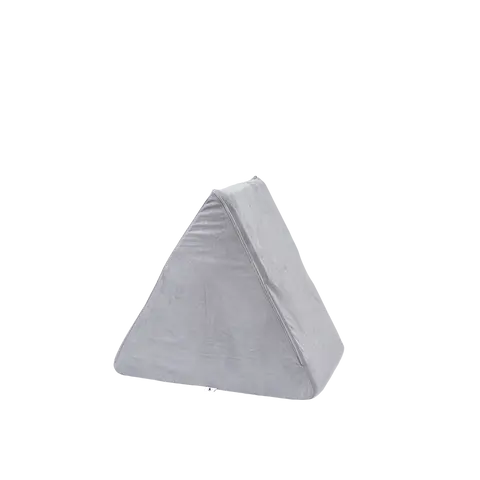I have tried it on several distros before and it always causes problems because you get a million more packages intermingled with your already installed packages and sometimes you get conflicts or whatever. But it usually messes up my system. is there a safe way to have several desktops installed? or do you pretty much install a new one then remove the old one? thanks
deleted by creator
What a mood. Im very guilty of not making backups and ruining setups only to have to start all over.
I’m a fairly new linux user so this is bound to happen again lol.
One word: Timeshift
Yup. Ive heard timeshift is good. Now i just gotta actually use it.
Hows the experience with timeshift been when youve used it? Pretty easy to restore from?
Pretty easy, and it’s saved my bacon a handful of times. Most recently I restored from command line because I borked my display driver (legacy Nvidia user).
Aside from that instance, everything else was done through the GUI.
oh dude i never do backups each time i start over from scratch its a brand new version of linux. the only “important” files (that I know of), i sync to the cloud.
Haha i feel that man. I’m thinking of switching to Linux entirely and ditching Windows so i gotta get better at making backups otherwise its gonna be full reinstalls no stop.
[This comment has been deleted by an automated system]
Oh thats neat. I’m assuming that can be configured for other package managers when you’re calling the apt equivalent?
Any package manager with pre install hooks should work. I know someone has written the necessary hooks for pacman, if Timeshift is in your distro’s package standard package manager I bet there’s a hook pre-written for you as well.
If there isn’t, Timeshift can also take daily/weekly/monthly/per-boot snapshots (with an optional limit for each separate type to keep). Because snapshots only track the differences, and /home is excluded by default, snapshots are generally smaller than a gigabyte or so because they only track OS updates and such. Older snapshots will grow in size as the difference between them and the current system state grows, but 9 months and an upgrade from Ubuntu 20.04 to 22.04 to 22.10 only took up 54GB on a 1TB disk.
I like the “take a snapshot each boot” option because you can revert every boot rather than specific actions, especially when your package manager lacks the necessary hooks.
Thats really good to know. Thanks for taking the time to explain that.
Containerization!
Use either Nix (the package manager) or Distrobox.
With Distrobox, you can create a few containers, install the favoured DE in each one separated, and use the “distrobox-export -a your-DE” function.
But I don’t know how seamless it will work, you might have to read into it.
Seconded, Distrobox is the way to go.
Here’s how you can actually make it work seamlessly @[email protected] :
https://github.com/89luca89/distrobox/blob/main/docs/posts/run_latest_gnome_kde_on_distrobox.md
For me, the only issue I have ever experienced is DEs like to force themes on you, so if I was to log into plasma, it will make the plasma theming default. This means thatvwhen I go bacl to a window manager, I have to change my theme again and oftentimes log out and log back in to ensure my theming is applied.
I’m on Slackware, so having 2 different desktop environments and …checks notes… 5 window managers installed is the default.
I’ve never noticed any conflicts.I feel like a lot of frustration and 50% of broken installations could be avoided if people just learnt to ignore installed packages they don’t use, instead of spending valuable time to free worthless amounts of disk space.
I always find suggestions that this will cause trouble curious I’ve been hearing this since 2003 when it might have been at least sort of true but didn’t have trouble with it then or now. I use i3wm but I like to play with and test different environments. I presently have gnome cinnamon mate plasma sway compiz, and wayfire installed. What do you imagine this is going to somehow screw up.
In my experiance there can be problems, though mostly when uninstalling where the user can see random needed pieces being deleted causing failure to boot, grub rescue menus, networking or bluetooth to fail, or audio to fail. All I have personally seen or experianced.
I have also seen installing plasma on mint delete most of cinnamon and networkmanager for who knows what reason
In general usage though I’ve never had an issue using gnome, plasma, and i3 (lately sway) on a system together.
Packages are a tree with stuff like glibc at the root and stuff like your browser at the leaf nodes. Total disaster normally entails doing interesting things and create things to break your package database or removing things too far up the tree python being an obvious and funny case. Hey I just asked it to get rid of python why did it ask to remove half my system!
I’m guessing you tried to install KDE from a repo outside of mint or ubuntu because hey kubuntu is just kde and ubuntu. When you ask your pkg manager to come to a solution, tell it its ok to remove packages and insist it install something non-compatible sometimes it just fails sometimes it offers interesting solutions. For instance maybe you tried to install something call it package D that was incompatible with the packages A and B but not strictly incompatible with C. So it tells you well you asked to have D you can have C and D if you let me jettison A and B. This is when you tell it no thank you and ask it a smarter question.
You can also get interesting solutions by trying to force it to install things it failed on, on some distros by half upgrading things so you have packages that depend on different versions and then trying to upgrade one thing without finishing the upgrade, or manually installing things.
Great explination, though I’ll be clear this was a friend of mine who installed plasma through the software center provided by mint with no additional repositories added. This, after seeing me do so on another system of theirs to show them plasma, the issue could very well have been what you’ve described.
Look at what happened with steam and PopOs which when trying to install wiped the desktop environment. Although this, ide breaking the machine, was localized solely on this singular machine. I do assume it was some irronious package mismatch that this person clicked “accept” on without reading what action would be taken
Does synaptics or even apt take care of these things automatically during install or do you manually need to configure every app you download?
The person skipped a few steps when they did something stupid where they had to pass a flag for it to remove crap in the cli too
This is a great answer thanks. I always install the environments through apt or synaptics. Then one of my issues or maybe its normal, all the packages and apps comingle I feel thats where the problem lays. I want each environment to be separate and actually be their perspective environment instead of each being a mish mash of each other. Hope that makes sense. It always causes issues for me at least. Also tried separated accounts for each environment and I’m sure thats a good way, but it didn’t work probably do to permissions. Idk how to set the right permissions to keep them seperste
deleted by creator
Install the DEs manually instead of from metapackages so ,out don’t end up with their entire software suites being installed. Additionally, probably use Debian instead of Ubuntu if you’re gonna be doing stuff like that, less fingers in the pie make for an easier tinkering experience.
In my experience the main issue are configuration conflicts not package issues. They’re usually just annoying issues not breaking issues.
I believe you can do this (and more) with Blend OS https://blendos.co/
How are you installing the DEs? I’ve consistently had at least 3 DEs on every machine I’ve had for the past decade and never had any issue with it. The secret is that I installed them through the package manager and don’t uninstall parts of it or anything of the sort, they’re there for when needed, I have enough disk space that it’s a non-issue.
one user per environment in terms of keeping the configs from fucking each other
deleted by creator







